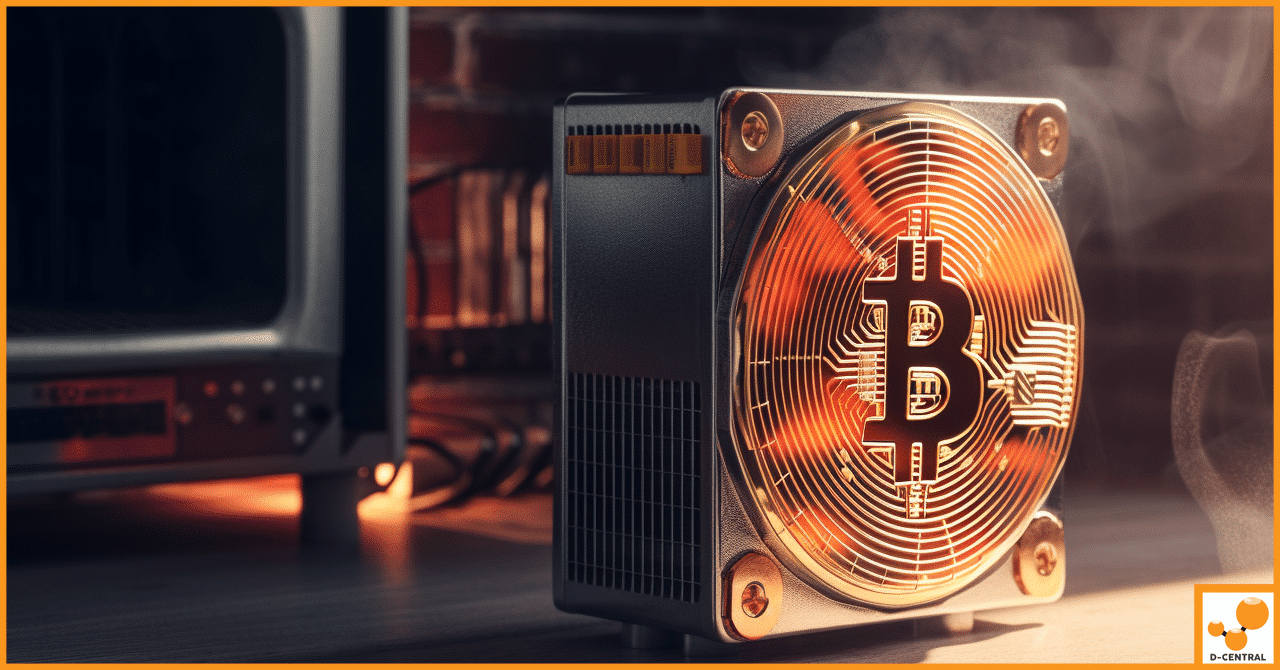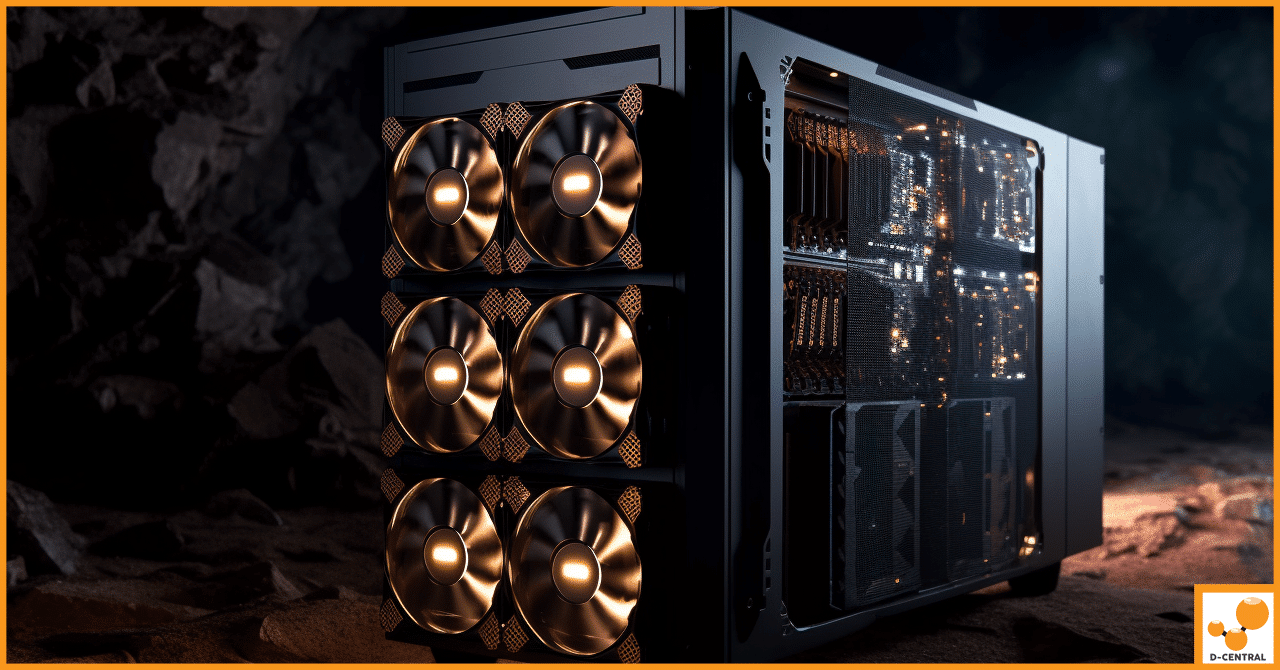In an era where the realms of technology and sustainability intersect more than ever, the innovative fusion of cryptocurrency mining and practical energy solutions presents a groundbreaking frontier. This phenomenon, particularly evident within the domain of car garages, symbolizes a remarkable shift towards leveraging digital assets for tangible, real-world applications. The purpose of this exploration is to shed light on how car garages are embracing Bitcoin mining not merely as a pathway to financial gain but as a strategic approach to heating, thus championing the dual benefits of energy efficiency and additional revenue generation. By delving into the mechanics, implications, and real-life implementations of Bitcoin mining heaters, we aim to uncover the transformative potential that cryptocurrency technology holds for enhancing operational efficiency and fostering sustainable practices in everyday businesses.
The Emergence of Bitcoin Mining as a Heating Solution
Bitcoin mining, at its core, involves validating transactions and securing the blockchain through the solving of complex mathematical problems. This process requires the deployment of specialized computers known as ASICs (Application-Specific Integrated Circuits), which consume substantial amounts of electricity, thereby generating a significant amount of heat as a byproduct. The energy-intensive nature of Bitcoin mining has often been a point of contention, sparking debates around its environmental impact. However, this excess heat, traditionally viewed as a waste product, is finding a new lease on life as a viable heating solution.
Historically, the concept of reusing waste heat is not new; various industries have explored cogeneration or combined heat and power (CHP) systems to enhance energy efficiency. In the context of Bitcoin mining, the practice of utilizing excess heat has gradually evolved from an experimental endeavor to a practical application, particularly in colder climates. Early adopters experimented with rudimentary setups to heat small spaces, such as residential garages or greenhouses, during the winter months. These initial forays demonstrated the potential for mining hardware not only to generate cryptocurrency but also to serve a dual purpose by providing a heat source.
This innovative approach to heating has gained traction, spurred by the rising awareness of energy conservation and the search for more sustainable heating solutions. Mining operations, ranging from individual hobbyists to larger-scale enterprises, have begun to integrate heat recovery systems that channel the excess heat from mining rigs to warm up living spaces, commercial establishments, and even to support agricultural activities. As the technology and methodologies around Bitcoin mining and heat recovery mature, we are witnessing an emerging trend that not only addresses the energy consumption critique but also adds a layer of utility and sustainability to the mining process.
Understanding the Mechanics Behind Bitcoin Heating
Bitcoin mining generates heat as a result of the intense computational processes it requires. Mining rigs, composed of specialized hardware like ASICs (Application-Specific Integrated Circuits) or GPUs (Graphics Processing Units), are designed to perform trillions of calculations per second. These calculations are necessary for validating transactions and securing the blockchain, a task that inherently consumes large amounts of electrical power. As electricity is converted into computational energy, a significant portion of it is dissipated as heat. This is an inevitable result of the laws of thermodynamics, particularly the law of conservation of energy, which states that energy cannot be created or destroyed in an isolated system, but can only be transformed from one form to another.
Converting the excess heat generated by Bitcoin mining into a heating solution for spaces involves capturing and redirecting this thermal energy away from the mining equipment and into the desired area for heating. The basic mechanism for this conversion is relatively straightforward but can be implemented through various sophisticated methods to enhance efficiency and effectiveness.
One common approach is using air ducting systems that channel the hot air produced by the mining rigs into the desired space. This can be as simple as positioning mining equipment in proximity to the area needing heating, with fans to assist in circulating the heated air. For larger setups or more controlled heating, heat exchangers can be used. These systems transfer heat from the mining equipment to air or water, which is then circulated into the space to be heated. This not only helps in maintaining the optimal operating temperature for the mining hardware but also provides a cost-effective and environmentally friendly heating solution.
More advanced installations might employ a closed-loop system, where cooled air or water is recycled back to cool the mining equipment, thus creating an efficient cycle of heating and cooling. This not only maximizes the use of the generated heat but also contributes to reducing the overall energy consumption of the mining operation.
The process also involves careful consideration of the layout and insulation of the space to ensure that the heat is distributed evenly and retained effectively. This means that, beyond the mere redirection of heat, thoughtful design and engineering are required to transform Bitcoin mining from a purely financial endeavor into a dual-purpose operation that also addresses practical heating needs.
Real-World Applications in Car Garages
In the innovative sphere of combining technology with sustainability, car garages leveraging Bitcoin mining heaters present a fascinating case study, particularly highlighted by the initiatives undertaken by D-Central Technologies. These real-world applications not only illuminate the practical benefits but also shed light on the challenges faced in implementing such a novel heating solution.
One standout example involves a car garage in Saskatoon, Canada, which ventured into Bitcoin mining as a method to offset heating costs during the frigid winter months. By installing Bitcoin mining rigs, the garage was able to repurpose the substantial heat generated by the mining process to maintain a warm environment for working on vehicles. This not only provided an effective heating solution but also introduced an additional revenue stream through Bitcoin rewards. The dual benefit of reducing operational costs while earning cryptocurrency highlights the potential profitability and sustainability of integrating Bitcoin mining into business operations.
Operational Benefits
- Cost Efficiency: The primary benefit realized by these car garages is significant savings on heating expenses. Traditional heating solutions can be costly, especially in colder climates where heating demands are high throughout extended winter months. Utilizing the heat generated from Bitcoin mining rigs presents a novel approach to tackle this issue effectively.
- Additional Revenue: Beyond just savings, the Bitcoin mined offers an alternative revenue stream. In an industry where profit margins can be thin, this additional income can provide a substantial boost to the garage’s overall financial health.
- Sustainability: By utilizing what would otherwise be waste heat, these garages contribute to a more sustainable operational model. This aligns with broader environmental goals and can enhance the business’s reputation among eco-conscious consumers.
Challenges Faced
- Initial Setup Cost: The upfront investment in purchasing and setting up Bitcoin mining rigs can be considerable. For smaller operations, this capital requirement may pose a barrier to entry.
- Technical Expertise: Operating and maintaining mining hardware requires a certain level of technical knowledge. Car garages venturing into this territory need to either develop this expertise in-house or outsource, adding complexity to their operations.
- Regulatory and Market Risks: The volatile nature of Bitcoin’s value, coupled with the evolving regulatory landscape around cryptocurrency, presents financial and operational risks. Garages must navigate these uncertainties carefully to ensure the long-term viability of their mining operations.
Despite these challenges, the innovative application of Bitcoin mining as a heating solution in car garages exemplifies a forward-thinking approach to business operations. It represents a confluence of technology and practicality, offering lessons in adaptability and sustainability that could resonate across various industries. As the technology evolves and more businesses explore this avenue, the blueprint laid down by early adopters like those in the automotive repair sector will be invaluable.
Economic and Environmental Impacts
The integration of Bitcoin mining as a heating solution in industries, particularly car garages, marks a significant stride towards operational efficiency and environmental sustainability. This approach not only promises economic advantages in terms of cost savings and additional revenue but also impacts the environment in nuanced ways.
Cost Savings: The primary economic benefit of utilizing Bitcoin mining for heating is the substantial reduction in heating costs. Traditional heating methods, such as gas or electric heaters, contribute significantly to operational expenses, especially in regions with colder climates. By harnessing the waste heat generated from Bitcoin mining, businesses can significantly lower these costs. The initial setup costs for mining equipment are offset over time by the savings achieved through reduced utility bills.
Additional Revenue: Beyond savings, Bitcoin mining introduces an alternative revenue stream. The process of mining yields Bitcoin as a reward, which, depending on market conditions, can be quite lucrative. This dual functionality of the mining equipment—providing heat and generating income—enhances the overall economic efficiency of the operation.
The economic and environmental implications of using Bitcoin mining as a heating solution are multifaceted. Economically, it offers a pathway to reduce operational costs and generate additional revenue. Environmentally, while challenges exist, the repurposing of waste heat from mining operations presents an innovative approach to enhance sustainability. As this practice continues to evolve, it will be essential to monitor its long-term viability and impact on both the economy and the environment.
Implementing a Bitcoin Mining Heater System in Your Garage
Implementing a Bitcoin mining heater system in your garage involves a blend of technological setup and strategic planning. This endeavor not only promises to heat your space during colder months but can also offer the dual benefit of generating cryptocurrency as a side income. Here’s how you can get started:
Step 1: Assessing Your Space and Needs
- Evaluate the Size of Your Garage: Determine the amount of heat required based on your garage’s size and insulation quality. This will help in selecting the right quantity and capacity of mining rigs.
- Ventilation and Airflow: Ensure proper ventilation is in place for both the efficient operation of mining rigs and the distribution of heat.
Step 2: Required Equipment
- Mining Rigs: Invest in ASIC miners for Bitcoin mining. ASICs are efficient and powerful, making them suitable for both mining and heating.
- Cooling and Exhaust Systems: Although your primary aim is to generate heat, managing airflow is crucial to prevent overheating of the devices.
- Electrical Setup: Ensure your garage has the necessary electrical wiring and capacity to support the high power usage of mining equipment.
- Monitoring and Maintenance Tools: Software for monitoring the mining process and basic maintenance tools for hardware upkeep.
Step 3: Initial Setup and Installation
- Installation Space: Designate a specific area in your garage for the mining rigs. Consider using shelving units to organize and optimize space.
- Electrical Safety: Consult with an electrician to safely set up the power supply for your mining equipment.
- Networking: Set up a stable internet connection to ensure your mining rigs are always connected to the Bitcoin network.
Step 4: Configuring Your Mining Rigs
- Software Installation: Install the necessary mining software on your rigs and configure them to mine Bitcoin. Choose a mining pool to join for more consistent payouts.
- Heat Distribution: Strategically position your mining rigs to maximize heat distribution across the garage. Use fans if necessary to circulate the warm air.
Step 5: Operational Considerations
- Noise Management: Be prepared for the noise generated by ASIC miners and consider noise reduction solutions if needed.
- Dust and Maintenance: Regularly clean your rigs and check for any maintenance needs to ensure they run efficiently and safely.
Calculating Initial Setup Costs and Potential ROI
- Costs: Include the price of mining rigs, electrical upgrades, internet service, and any cooling or ventilation improvements. Also, consider the ongoing electricity costs.
- Revenue: Estimate potential earnings from Bitcoin mining using online calculators that factor in your hardware’s hash rate and the current difficulty level of mining.
- ROI: Compare your initial and ongoing costs with your estimated revenue to calculate the return on investment. Remember, the volatility of Bitcoin’s price can significantly impact your actual earnings.
Implementing a Bitcoin mining heater system in your garage is an innovative way to address heating needs while potentially earning cryptocurrency. However, the success of such a venture relies heavily on continuous learning, monitoring, and adapting to the ever-evolving landscape of cryptocurrency mining.
Conclusion
The innovative practice of leveraging Bitcoin mining as a heating solution in car garages presents a compelling synergy between the digital and physical realms, offering tangible benefits while navigating inherent challenges. This method has proven not just a theoretical concept but a practical solution that addresses both the need for efficient heating in colder climates and the desire for sustainable, cost-effective operations.
The benefits of integrating Bitcoin mining into heating solutions are multifaceted. Economically, it provides a dual advantage: reducing heating expenses significantly and generating an alternative revenue stream through Bitcoin mining. Environmentally, it offers a sustainable solution by repurposing waste heat, thereby contributing to a reduction in the carbon footprint of traditional heating methods. This innovative approach showcases the potential for technology to drive sustainability in everyday business operations.
However, the path to implementing such a system is not without its challenges. Initial setup costs, the need for technical expertise, and the volatility of Bitcoin’s value are considerations that businesses must navigate carefully. Despite these obstacles, the potential for cost savings and environmental impact reduction makes Bitcoin mining heating solutions an attractive proposition for forward-thinking businesses.
D-Central Technologies is at the vanguard of this movement, offering cutting-edge solutions and expert consultancy services to businesses looking to adopt this innovative heating method. Their customized approach ensures that each solution is tailored to meet the specific needs and challenges of their clients, paving the way for wider adoption across various industries.
FAQ
What is the primary benefit of leveraging Bitcoin mining as a heating solution in car garages?
The primary benefit of using Bitcoin mining as a heating solution in car garages is the ability to generate substantial heat to maintain a warm environment while simultaneously creating an additional revenue stream through Bitcoin rewards. This approach significantly reduces heating expenses and introduces a novel way to improve operational efficiency and sustainability.
How does Bitcoin mining generate heat?
Bitcoin mining generates heat through the intensive computational processes required for validating transactions and securing the blockchain. Mining rigs, equipped with specialized hardware like ASICs or GPUs, consume large amounts of electrical power in performing these calculations, which is then dissipated as heat due to the law of conservation of energy.
What are some real-world applications of Bitcoin mining heaters in car garages?
Real-world applications include using the excess heat from Bitcoin mining rigs to warm up car garages during cold months, providing a cost-effective heating solution while earning Bitcoin. An example includes a garage in Saskatoon, Canada, that successfully implemented this innovative heating method to offset heating costs and generate additional revenue.
What operational benefits do car garages experience from implementing Bitcoin mining heaters?
Operational benefits include cost efficiency by saving on traditional heating expenses, generating an alternative revenue stream through Bitcoin mining, and contributing to sustainability by repurposing waste heat. This innovative approach aligns with broader environmental goals and enhances the business’s economic and environmental efficiency.
What challenges do businesses face when implementing Bitcoin mining as a heating solution?
Challenges include the initial setup cost of purchasing and setting up Bitcoin mining rigs, the need for technical expertise to operate and maintain the mining hardware, and navigating the financial and operational risks associated with the volatile nature of Bitcoin’s value and the evolving regulatory landscape of cryptocurrency.
How can a business or individual implement a Bitcoin mining heater system in their garage?
Implementing a Bitcoin mining heater system involves assessing the garage space and heating needs, acquiring the necessary mining rigs and equipment, setting up and installing the mining hardware, configuring the rigs for efficient heat distribution and Bitcoin mining, and continuously monitoring and maintaining the operation to ensure safety, efficiency, and profitability.










